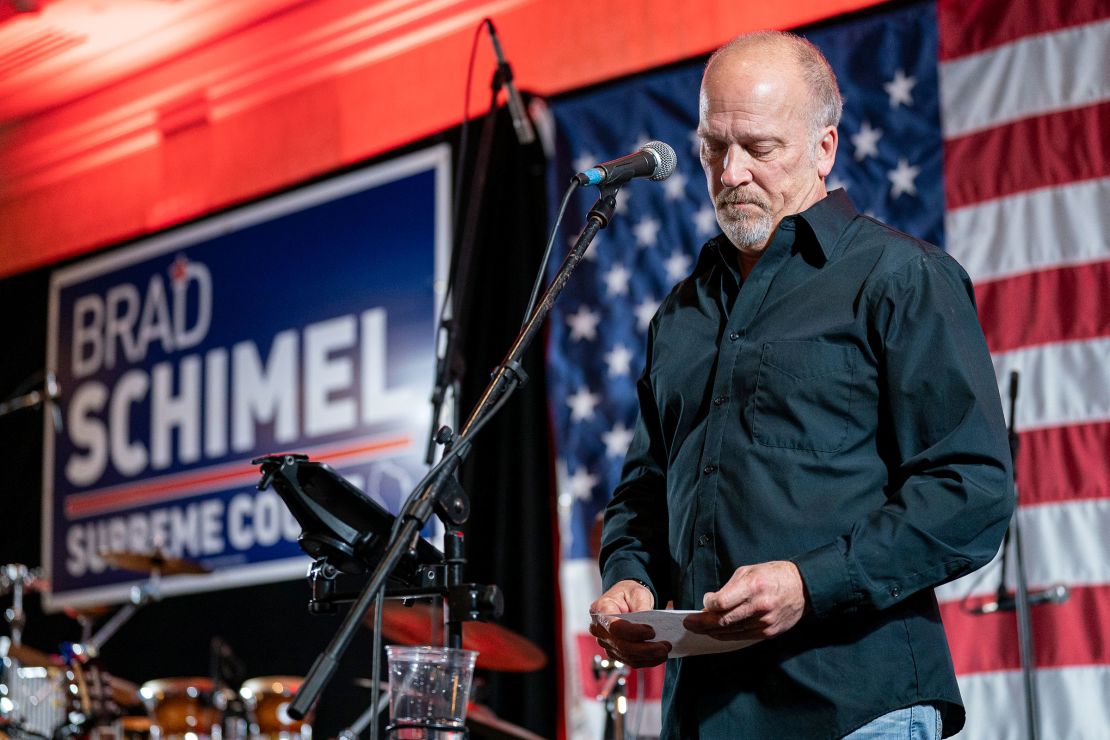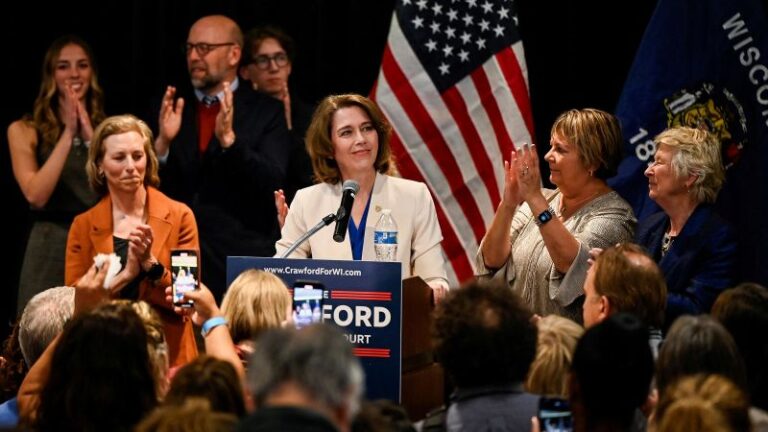CNN
—
A trio of election results this week have Republicans confronting a new reality: not only are they facing political headwinds as the party in power but simultaneously grappling with a dramatic reversal in the partisan preferences of the country’s most reliable voters.
For years, Republicans were seen as the party that dominated lower profile elections outside presidential years, while Democratic voters were less consistent. But under President Donald Trump, Republicans worry their base has shifted to include low propensity voters who turn out for him but are not as motivated as Democrats to show up when he’s not on the ballot.
Democrats have overperformed the top of the 2024 ticket in nearly every special election this year, flipped control of two state Senate seats in Iowa and Pennsylvania, halved the margins for two open US House seats in Florida and won a high-profile Wisconsin state Supreme Court race by a resounding 10 points. While Democrats have said those results are a sign that voters are rejecting the Trump administration’s agenda, some top Republicans have raised alarms about turning out the base.
“The political problem on the Republican side of the aisle is how to get our base to vote in off-cycle elections,” Vice President JD Vance wrote on X, adding that it was time for the GOP establishment to learn from Trump’s political success.
Charlie Kirk, the founder of Turning Point USA, argued that Republicans must acknowledge that they are the party of low propensity voters, or people who don’t consistently show up to vote.
“Special elections and off-cycle elections will continue to be a problem without a change of strategy,” he wrote on X.
Kirk, whose organization worked to engage low propensity voters in swing states during the 2024 election cycle, said politics is an “afterthought” for many of their voters and Republicans needed to “begin to fully fund the infrastructure to match the Democrat machine” ahead of the 2026 midterms.
Turning out Trump loyalists who vote infrequently could be key to Republicans’ electoral fortunes, especially as the president’s agenda risks pushing away independent and moderate swing voters.
Republicans are also hoping to maintain control of the Virginia governor’s seat, despite the state’s Democratic lean and potentially build on their narrow House and Senate majorities.
The party that wins the White House historically loses seats in midterm cycle that follows, and voters have become increasingly willing to back split government – Presidents Barack Obama, Donald Trump and Joe Biden all lost the House two years after first being elected.
One GOP political operative familiar with House campaigns said the party is still on offense and pointed to the 13 US House districts Trump won in 2024 that are held by Democrats. Republicans have also noted it’s too early to say what the political climate, the economy or Trump’s approval ratings will look like next year.
A Reuters/Ipsos poll released this week found that Trump had a 43% approval rating, with 52% of Americans saying they agree tariffs on imported goods would do more harm than good and 57% viewing the president’s moves to shake up the economy as too erratic.
Throughout the Trump era, Democrats have pointed to special and off-year election victories and closer-than-expected losses as evidence of a momentum advantage. During Trump’s first term, Democrats won a GOP-held Pittsburgh-area US House seat and an Alabama US Senate seat in special elections ahead of winning back the House in 2018. The party also significantly cut into GOP margins in a handful of special elections for deep-red US House seats in states such as Kansas and South Carolina.
Mike DuHaime, a former political director of the Republican National Committee, said Republicans would have to learn the same lesson Democrats did under Obama. Despite his 2008 and 2012 wins, Democrats suffered substantial downballot losses in the 2010 and 2014 midterms.
“When it comes down to turning out Republicans, it takes money, it takes a message, and it takes an exciting candidate,” DuHaime said.
He pointed to Wisconsin, where Brad Schimel, a conservative state Supreme Court candidate endorsed by Trump, lost to liberal Susan Crawford. Though Schimel won 63% of the number of votes Trump received in November – exceeding the 60% mark Republicans estimated they needed to win – Crawford won 78% of the number of votes Vice President Kamala Harris received. Schimel lost despite Trump hosting a tele-rally to back him and Tesla CEO Elon Muskcombining with allied groups to spend more than $20 million to boost him.

“In Wisconsin, the money was certainly there,” DuHaime. “Whether or not the message and the candidate were there, that’s where the question lies.”
Sean Noble, an Arizona-based Republican strategist, said Republicans have failed over the years to build up a long-lasting get-out-the-vote infrastructure to compete with Democrats.
“Democrats have an advantage over Republicans on what I would call a permanent infrastructure of turnout that Republicans have never taken the time or effort or money to really build and sustain over the long term,” he said.
In 2024, the Trump campaign and its allies made the risky decision to focus on turning out infrequent voters for the president. That bet paid off for the president, but Republicans in other races struggled to harness that support for themselves, even when they shared the ballot with Trump.
While Trump won in Michigan, Arizona and Wisconsin last year, the Republican Senate candidates he endorsed in those states lost after receiving several thousand fewer votes than the president. The Democratic Senate candidates were able to hold onto most of Vice President Kamala Harris’ support or, in the case of Ruben Gallego in Arizona, surpass it.
Republican pollster Whit Ayres dismissed the idea that the Republican Party as a whole had become the party most likely to benefit from turning out infrequent voters.
“Donald Trump is president in no small part because of low propensity voters who turn out to vote for him,” he told CNN. “That doesn’t mean they’re going to turn out to vote for other Republicans.”
Ayres said Democrats’ performance in recent special and off-year elections was reminiscent of the 2018 midterm elections, when Democrats made huge gains in the House of Representatives. To avoid a similar fate next year, he said Republicans would need to avoid unpopular agenda items.
“You might want to not tank the entire world economy with massive tariffs,” he said. “That might be a good start.”
Democrats have argued that the issue for Republicans isn’t with infrequent voters, but with swing voters who elected Trump to lower prices and improve the economy.
“Their problem is not that they plan for low propensity voters to vote in these special elections and they’re not showing up,” said Heather Williams, the president of the Democratic Legislative Campaign Committee. “What they’re losing is Republicans, either to inaction or questioning their policies.”
Jennifer Konfrst, Iowa’s Democratic House Minority Leader, said Democrats in her state wereable to flip a Republican-held state Senate seat thanks to solid candidate recruitment – Democrat Mike Zimmer was an elected school board leader and longtime high school principal in district – and connecting with Democrats who are ready to re-engage in politics after their defeat in November.
“There are some folks who have just been kind of unplugging for a while,” she said. “They are plugged back in now, and they are ready to fight.”
In Wisconsin, Democrats pointed to high turnout and Crawford’s success in red areas as evidence that she’d won over Trump voters. Crawford won ten counties that backed Trump in November, including Green Bay’s Brown County, where Musk gave out two $1 million checks to voters at an event the weekend before the election.

“There were clearly MAGA voters that were voting for Brad Schimel, but there were a lot of Republican voters that were voting for Susan Crawford,” Patrick Guarasci, a senior advisor to Crawford’s campaign, told CNN.
National Democrats have become increasingly bullish on their chances of winning back the House after Tuesday’s races.
Democratic National Committee chairman Ken Martin said recent special elections showed “voters moving en masse towards the Democratic Party,” during a press call this week.
State party leaders are echoing that optimism. Florida Democratic Party chair Nikki Fried said this week’s special election results should scare any Republican who won by less than 15 pointslast November, while in Wisconsin, chair Ben Wikler said voters in his state sent a clear message: “Democrats are back.”


